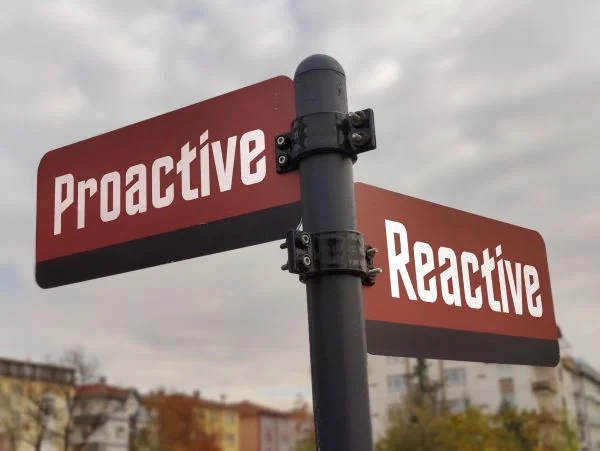Jay Leno believes the greatest pitfall people have when choosing a car is that they’re too easily swayed by someone else’s opinion. Suppose you’re in the market for a car, looking at a model that appealed to you for various reasons, and then someone tells you that they feel the car is not worth the price. Perhaps they tell you it doesn’t have the best rear-headroom space compared to other models, or the acceleration is underwhelming, or the sound system doesn’t compare to a competitor. As a result, you reconsider your choice or possibly eliminate that vehicle from your consideration entirely. But what if that vehicle you’re no longer looking at would have been a sound choice, if not the overall best choice? Being too easily swayed by another’s opinion is certainly an issue when it comes to decision-making, but the bigger danger people face because of this is allowing their mind to be made up by just a couple variables that may or may not matter in the long-term, rather than approaching the decision from a holistic and objective standpoint.
Any decision, however big or small, should consider the 4 “R’s”:
- Results you want the best choice to deliver
- Resources you are prepared to save or spend to make that choice
- Restrictions that will limit your choice
- Risks that could make a choice backfire once it’s made
The goal is to minimize bias when evaluating alternatives. This is especially important in situations where the consensus of a group is needed to make a choice. What happens when each stakeholder has their own personal “pet” choice in mind? They will likely try to convince others to see their reasoning and agree that their choice is the clear winner. More likely than not, people will disagree which will deter progress. What also might happen is people start prioritizing criteria they know their preferred choice will meet better than others, which then starts to sway the decision unfairly.
Have you ever been in a meeting to make a choice where people disagreed over what was to be decided? Setting the stage upfront could help. Keeping with the car analogy, let’s say our decision is to “Choose a luxury car to finance”. With the purpose of this decision in mind, the first step is to establish the criteria for making this choice. This is where most folks tend to go wrong with their decision-making because they become overly preoccupied with features that might seem nice to have, but won’t necessarily deliver lasting satisfaction.
For example, what do you think of when imagining a new car? Time and again when asked this question people usually have answers like “fancy technology, heated seats, ventilated seats, leather seats, sunroof, cupholders, speed, climate control, satellite radio, etc.” These days it’s far too easy to get overwhelmed by the sheer volume of features that automakers provide. Yet, in this increasingly competitive market, where it seems every auto manufacturer now offers a model with comparable features, how is the average consumer supposed to distinguish from one brand to the next? If we base our car-buying decision on characteristics like those listed above, some cars will seem like equals in the decision because they all share the same things, while others will fail because they don’t have something. This then elicits a couple of questions. If a car does not have a specific feature, does that mean it should be eliminated from consideration? And, if two cars share the same feature, are they truly equal in terms of performance? Just because two cars have leather seats does not mean the leather in both is of the same quality. Rather than take the “either it has it or it does not” approach, it will add more value to consider the reasons why certain things matter and elevate the thinking to a higher level.
Results
After thinking about it, maybe the real reason why having leather seats is so important is that the consumer just wants to maximize their driving comfort. If that’s the real reason behind wanting leather seats, clarifying this now gives the consumer the opportunity to compare the cars they’re looking at for the quality of the leather they have in their seats. Consider, certain types of leather may be softer and cushier than others and therefore meet this objective better, so simply having leather in the seat may not be enough.
When it comes to results, the savvy car-buyer should be considering both the short as well as the long-term benefits they want in their “best” car. After immediately getting their car, what about it would make them instantly happy? What would continue to make them happy months and years down the road? It’s important to consider both because otherwise, one might invest in something that only creates fleeting happiness. Short-term you might get some immediate pleasures with a new car, but suppose long-term the car doesn’t hold up well, drives unreliably, requires frequent maintenance and ultimately has a poor resale value. In six years will you still say you made the best decision?
Resources
In addition to results, the decision-maker should also consider resources they are prepared to save or spend to make their choice. Fancy technology and glittery gizmos are nice, but would the consumer still be happy with that car if they are filling up twice weekly at the pump to the tune of an $80 expense? What if it offers sugar, spice and everything nice, but drives the insurance cost ridiculously high? In many decisions, cost and time are two resources that merit some consideration. How much time is there to make or implement a choice, and at what cost? Would it be nice to get something done as quickly as possible, while spending as little as possible? Resources should be balanced against results.
Restrictions
Seldom is there a decision without some hard requirements involved. Such criterion eliminates truly poor choices, ensuring those that remain are even worthy of consideration. However, one should think very carefully about what’s truly a “must-have” to avoid having false requirements that end up throwing away choices unfairly. A true “must-have” is what will make somebody instantly walk away from a choice without exception. In some cases, these may be pre-determined by law, regulation or policy. If this “must have” is truly non-negotiable, a realistic and definitive pass/fail condition must be very clear. If it is negotiable then fundamentally it’s not a “must-have”. For instance, one might say their monthly finance limit is $375. However, if they’re willing to consider $385 or even $400 given the right conditions, then they should reset the number at a limit, beyond which they wouldn’t consider spending a penny more.
Risks
Having a good list of objectives, as determined by the discussion around results, resources and restrictions, will help decision-makers fairly compare performance of the alternatives that they are examining. However, before making the final choice there should always be a consideration of the unknown. How could an alternative backfire down the road? What could go wrong that would detract from all the benefits that an alternative provides? Sometimes a decision might change last minute given unacceptable risks. Before moving forward with what seems to be the best choice, consider if the probability of any potential problems can be minimized to an acceptable degree, and if the seriousness of those problems occurring can be acceptably mitigated. A decision is only a good decision if it stands the test of time without someone feeling that sense of buyer’s remorse.
Buying a car is a relatively simple example to work with. But these decision-making concepts can be applied in any scenario, personal or organizational. Decision-making will always be inherently complicated because of the emotion that’s involved. Following a logical process won’t eliminate emotion from the equation, but will help manage it and facilitate collaboration. If the outcome of the decision matters to someone, it pays for folks to spend the most time upfront outlining what they want so they can maximize their chances of picking the winner.



